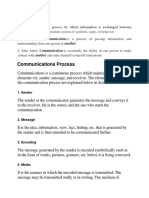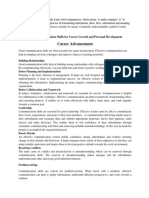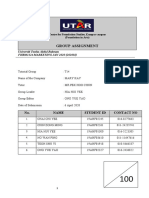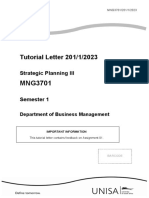0% found this document useful (0 votes)
16 views17 pagesUnit II Notes
The document discusses the significance of effective communication in business, emphasizing its role in enhancing relationships, facilitating collaboration, and improving decision-making. It outlines the 7 C's of communication—clarity, conciseness, concreteness, completeness, courtesy, correctness, and consideration—as essential for successful exchanges. Additionally, it details the integrated communication mix, which combines various marketing methods to create a cohesive strategy for reaching and engaging target audiences.
Uploaded by
rudrakshranjansingh540Copyright
© © All Rights Reserved
We take content rights seriously. If you suspect this is your content, claim it here.
Available Formats
Download as DOCX, PDF, TXT or read online on Scribd
0% found this document useful (0 votes)
16 views17 pagesUnit II Notes
The document discusses the significance of effective communication in business, emphasizing its role in enhancing relationships, facilitating collaboration, and improving decision-making. It outlines the 7 C's of communication—clarity, conciseness, concreteness, completeness, courtesy, correctness, and consideration—as essential for successful exchanges. Additionally, it details the integrated communication mix, which combines various marketing methods to create a cohesive strategy for reaching and engaging target audiences.
Uploaded by
rudrakshranjansingh540Copyright
© © All Rights Reserved
We take content rights seriously. If you suspect this is your content, claim it here.
Available Formats
Download as DOCX, PDF, TXT or read online on Scribd
/ 17






















































































